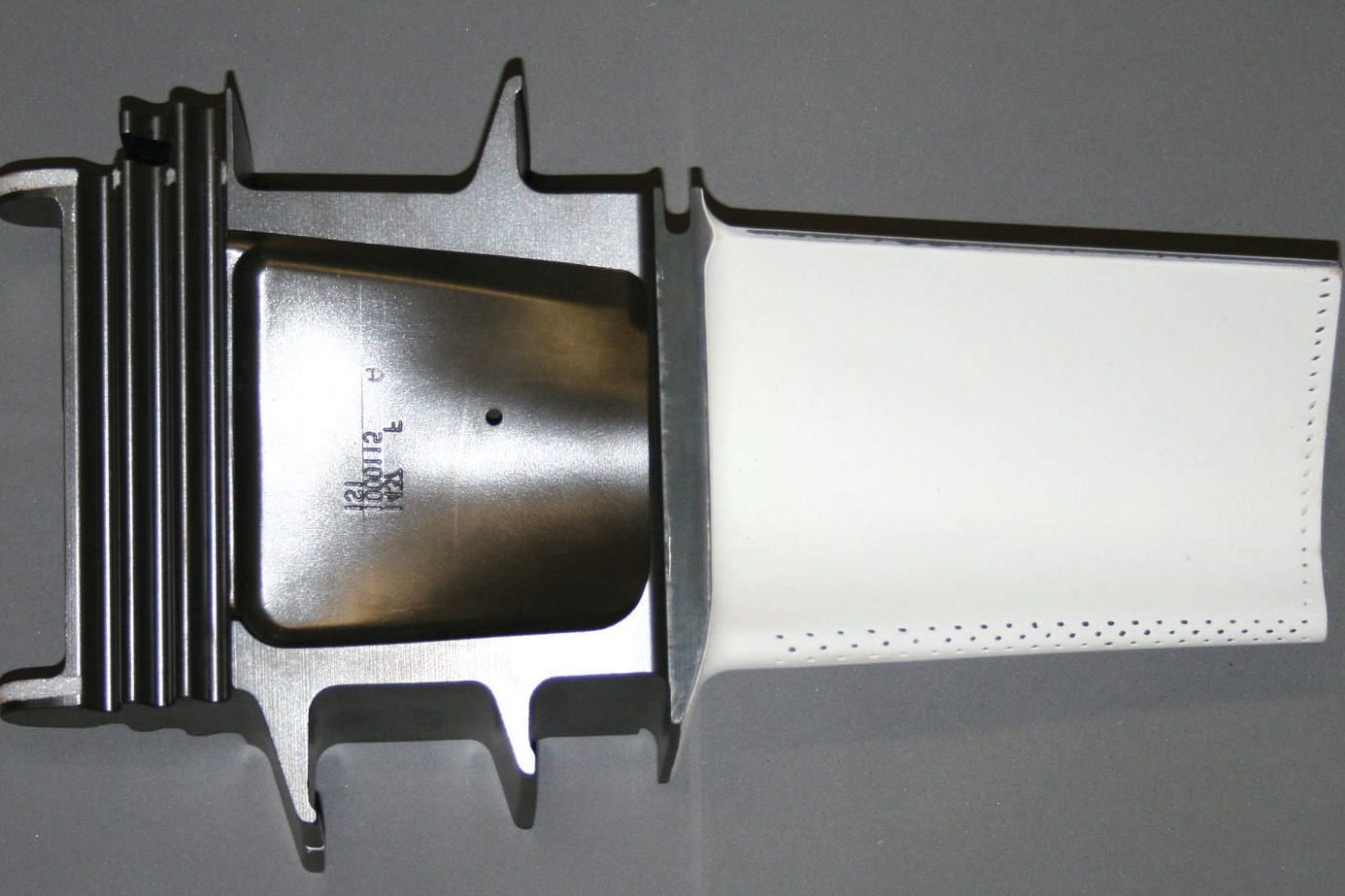Protecting High-Temperature CNC Parts with Thermal Barrier Coatings
Introduction
Thermal barrier coatings (TBCs) are advanced surface treatments specifically designed to protect CNC machined components operating under extreme temperatures. Typically composed of ceramic materials such as yttria-stabilized zirconia (YSZ), these coatings (typically 100–500 µm thick) significantly reduce heat transfer, improve thermal resistance, and prolong component lifespan in high-temperature environments.
Essential for sectors such as aerospace, automotive, power generation, and industrial gas turbines, TBCs are particularly beneficial in preserving precision geometries and complex features and maintaining the dimensional accuracy of CNC machined parts exposed to severe thermal cycles.
Thermal Barrier Coating Technology: Superior Protection for High-Heat Applications
Scientific Principles & Industrial Standards
Definition: Thermal barrier coatings are specialized ceramic-based layers deposited onto metallic components. They create a thermal insulation barrier, reducing substrate temperature and enhancing corrosion and oxidation resistance under extreme heat conditions.
Governing Standards:
AMS 2447: Specification for ceramic thermal barrier coatings
ASTM C633: Adhesion or cohesion strength of thermal spray coatings
ISO 17834: Thermal barrier coating systems performance assessment
Process Function and Cases
Performance Dimension | Technical Parameters | Application Cases |
|---|---|---|
Thermal Protection | - Operating temperatures: ≥1200°C - Thermal conductivity: 1.0–2.5 W/m·K | Gas turbine blades, Exhaust manifolds, Combustion chambers |
Corrosion & Oxidation Resistance | - Oxidation resistance: ≥2,000 hours at 1100°C - Resistant to high-temperature corrosion | Aerospace engine nozzles, Automotive turbochargers, Power plant components |
Enhanced Component Lifespan | - Cyclic thermal resistance: ≥1000 cycles (RT↔1200°C) - Reduced thermal fatigue | Aerospace turbine blades, Diesel engine pistons, Industrial heat exchangers |
Dimensional Stability | - Negligible dimensional impact: ≤0.05 mm - High adherence: ≥70 MPa bond strength | Precision aerospace components, Automotive valves, Industrial furnace parts |
Thermal Barrier Coating Process Classification
Technical Specification Matrix
Coating Method | Key Parameters & Metrics | Advantages | Limitations |
|---|---|---|---|
Electron Beam Physical Vapor Deposition (EB-PVD) | - Thickness: 100–200 µm - Operating temp: >1200°C - Bond strength: >100 MPa | - Exceptional thermal shock resistance - Precise thickness control | - High process cost - Limited to high-value components |
Plasma Spray TBC | - Thickness: 200–500 µm - Porosity: 10–15% - Thermal conductivity: ~1.5 W/m·K | - Cost-effective, versatile process - Suitable for large components | - Moderate thermal shock resistance - Requires careful sealing |
High-Velocity Oxy-Fuel (HVOF) | - Thickness: 100–400 µm - Low porosity: <2% - Bond strength: 80–100 MPa | - High-density coating - Excellent oxidation resistance | - Slightly lower maximum operating temp (up to ~1000°C) |
Air Plasma Spray (APS) | - Thickness: 150–500 µm - Porosity: ~15% - Application flexibility | - Effective thermal insulation - Broad material compatibility | - Moderate bond strength - Requires sealing for corrosion resistance |
Selection Criteria & Optimization Guidelines
Electron Beam Physical Vapor Deposition (EB-PVD)
Selection Criteria: Ideal for critical aerospace and high-performance automotive CNC components requiring exceptional thermal shock resistance and precise control.
Optimization Guidelines:
Precisely manage deposition parameters for columnar microstructure
Maintain rigorous substrate cleanliness for superior adhesion
Verify coating integrity using thermal cycling tests
Plasma Spray TBC
Selection Criteria: Optimal for general-purpose high-temperature insulation on medium to large CNC machined components in industrial and automotive sectors.
Optimization Guidelines:
Control plasma parameters (temperature, velocity) for desired porosity
Employ suitable sealants to enhance oxidation resistance
Regularly measure coating thickness and porosity
High-Velocity Oxy-Fuel (HVOF)
Selection Criteria: Recommended for CNC parts requiring dense, robust coatings with high bond strength and excellent oxidation protection.
Optimization Guidelines:
Adjust fuel-to-oxygen ratios precisely
Pre-apply a metallic bond coat for improved adhesion
Ensure strict adherence to thickness tolerances
Air Plasma Spray (APS)
Selection Criteria: Suitable for diverse applications demanding cost-effective, flexible thermal insulation coatings on CNC components.
Optimization Guidelines:
Monitor plasma spraying parameters for consistent thickness
Implement effective surface pre-treatment
Post-process sealing for enhanced durability
Material-Coating Compatibility Chart
Substrate | Recommended TBC Method | Performance Gain | Industrial Validation Data |
|---|---|---|---|
EB-PVD | Increased thermal cycle durability | Aerospace turbine blades validated for >1,200°C cyclic operation | |
Plasma Spray TBC | Reduced substrate temperature by ~300°C | Validated for aerospace exhaust system components | |
HVOF | Excellent oxidation protection | Industrial furnace components validated for >1,000 hours at 1000°C | |
APS with intermediate bond coat | Enhanced heat resistance & durability | Automotive engine parts validated with prolonged operational lifespan | |
Plasma Spray TBC | Improved corrosion and heat resistance | Power plant exhaust systems certified for high-temperature stability |
Thermal Barrier Coating Process Control: Critical Steps & Standards
Pre-Treatment Essentials
Surface Preparation: Grit blasting (Al₂O₃ abrasive, 0.3–0.5 MPa) Validation: ISO 8501-1 Sa 3.0 standard cleanliness
Bond Coat Application: Metallic bond coat deposition for enhanced adherence Validation: Thickness & adhesion testing (ASTM C633)
Coating Process Controls
Thickness Measurement: Eddy current or ultrasonic thickness gauges Validation: Thickness tolerance ±10%
Temperature Management: Automated real-time control of coating temperature Validation: IR pyrometer accuracy ±5°C
Post-Coating Enhancement
Porosity Sealing: Vacuum impregnation with suitable sealants Validation: Porosity inspection (ASTM D4404)
Thermal Cycling Tests: Simulated operational temperature cycles Validation: ISO 17834 cyclic thermal resistance standards compliance
FAQs
How effective are thermal barrier coatings in reducing heat transfer?
Can TBCs be applied uniformly to complex CNC geometries?
What is the typical service life improvement with thermal barrier coatings?
Are thermal barrier coatings suitable for automotive turbocharger components?
How do EB-PVD coatings compare to plasma spray coatings?

